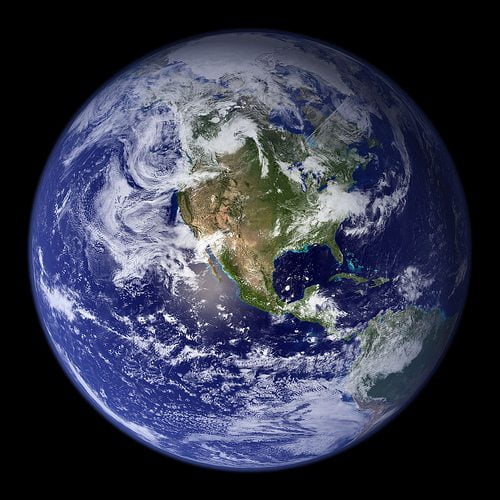

Environment
Met Office maps impacts of climate change
The Met Office and the UK government have launched a comprehensive new map to show how the impacts of climate change could change the way we live around the world.
The complex ‘Human dynamics of climate change’ infographic was published last week to illustrate how rising temperatures will affect human activities such as food production and trade.
In the centre of the infographic is a map of present-day human interaction, which shows things like population density, water scarcity and melting glaciers as well as the directions of trade and the importation of crops.
Surrounding this map are six smaller maps that, based on a business as usual greenhouse gas emission scenario, forecast what might happen if little effort is made to mitigate or adapt to climate change.
They highlight a range of troubling impacts. One warns that temperatures on the warmest days of the year may rise by more than 6C across Europe and parts of Asia and North America by the end of the 21st century.
Others show that the number of days of drought may increase by more than 20% in parts of South America, Australia and Southern Africa, while the risk of flooding may rise across 70% of Asia.
The risk of flooding is also expected to decrease across most of Europe, but that does not include the UK, where floods will actually become more frequent.
At first glance though, the inforgraphic does seem to suggest that it is not all so bad. One map estimates that global yields of wheat, rice and soybean will actually increase in a warming world, as losses in Africa and Asia are compensated by increased output elsewhere.
However, the Met Office point out that the calculations behind this do not take into account the availability of water for agriculture, hiding the variability that will come as droughts grow more common.
The most worrying prospect flagged by the maps is that in some countries these risks may collide. Increasingly water stressed nations may find themselves with rapidly growing demand for water because of growing populations and the need for greater agricultural production.
“While we see both positive and negative impacts, the risks vastly outweigh any potential opportunities,” explained Dame Julia Slingo, Met Office chief scientist.
Foreign office minister Mark Simmonds added that the project “reinforces the point that climate change is a global problem.
“No country is immune, and we all need to work together to reduce the risks to our shared prosperity and security”.
By focussing on the worst-case scenario, it is hoped the maps will highlight the urgent need for action to mitigate and adapt to climate change.
Although many governments, companies and investors around the world are taking action, most indicators suggest the world is currently on track to warm by more than 2C this century. Above 2C, a threshold suggested by scientists and agreed by world leaders, experts fear that irreversible tipping points will be set in motion.
However, a report submitted to the UN last week found that with international cooperation and significant investment in energy efficiency, low-carbon energy and fuel switching, the world’s biggest polluters could decarbonise before it is too late.
Photo: NASA Goddard Space Flight Center Image / Reto Stöckli via Flickr
Further reading:
Climate’s ‘annual physical’ reveals record-breaking global warming
Met Office issue heatwave warnings for the UK
Climate change targets may not be enough to prevent 2C global warming


 Environment10 months ago
Environment10 months agoAre Polymer Banknotes: an Eco-Friendly Trend or a Groundswell?

 Environment12 months ago
Environment12 months agoEco-Friendly Home Improvements: Top 7 Upgrades for 2025

 Features9 months ago
Features9 months agoEco-Friendly Cryptocurrencies: Sustainable Investment Choices

 Features10 months ago
Features10 months agoEco-Friendly Crypto Traders Must Find the Right Exchange





























